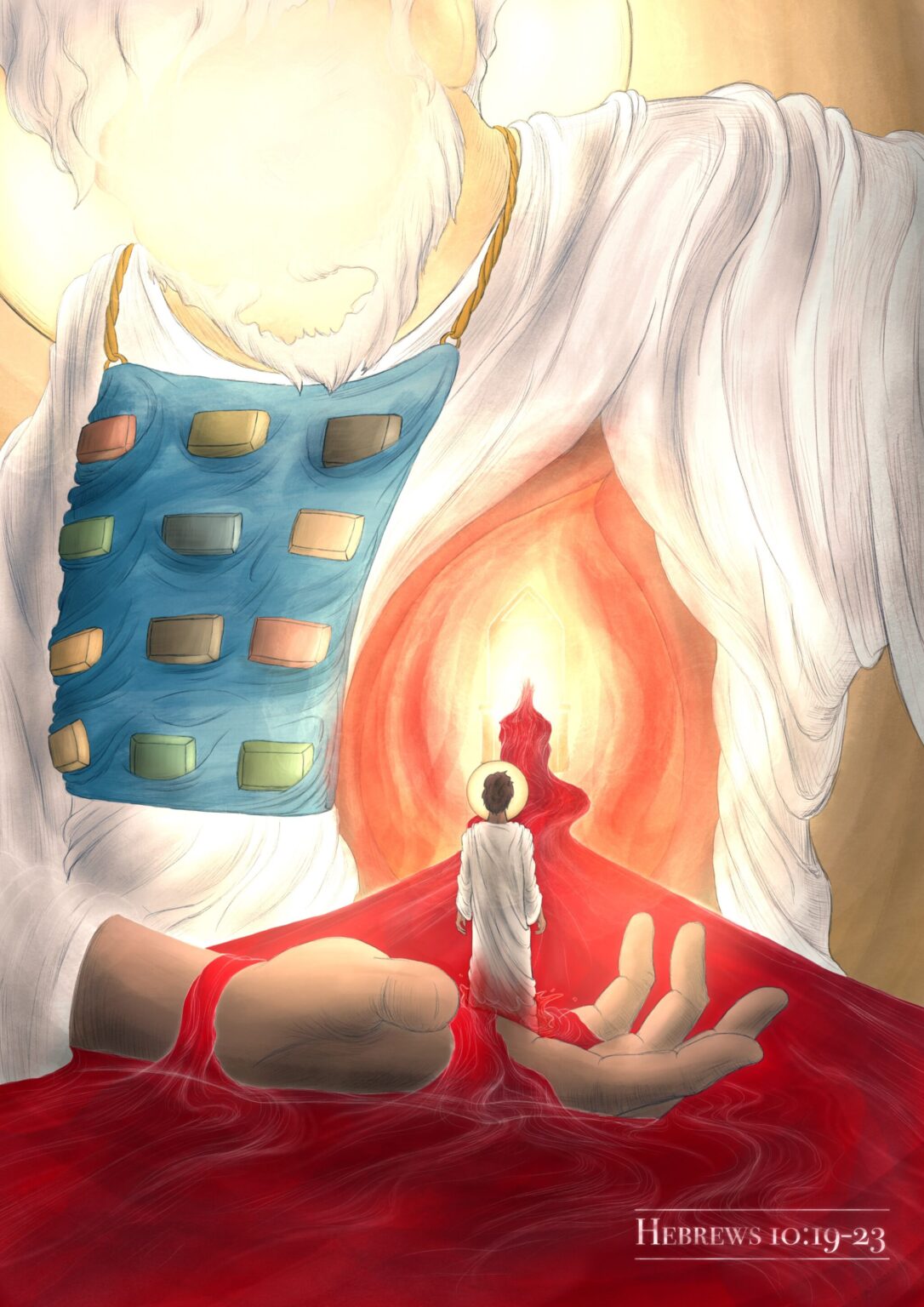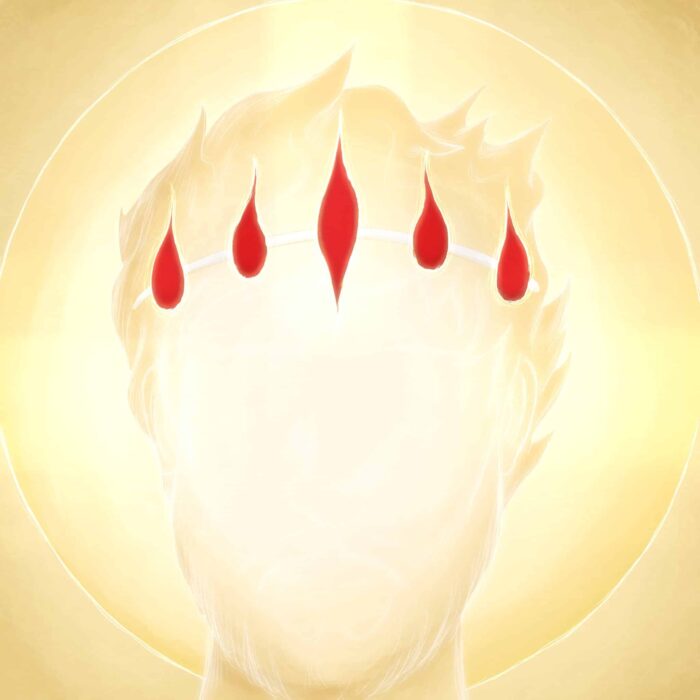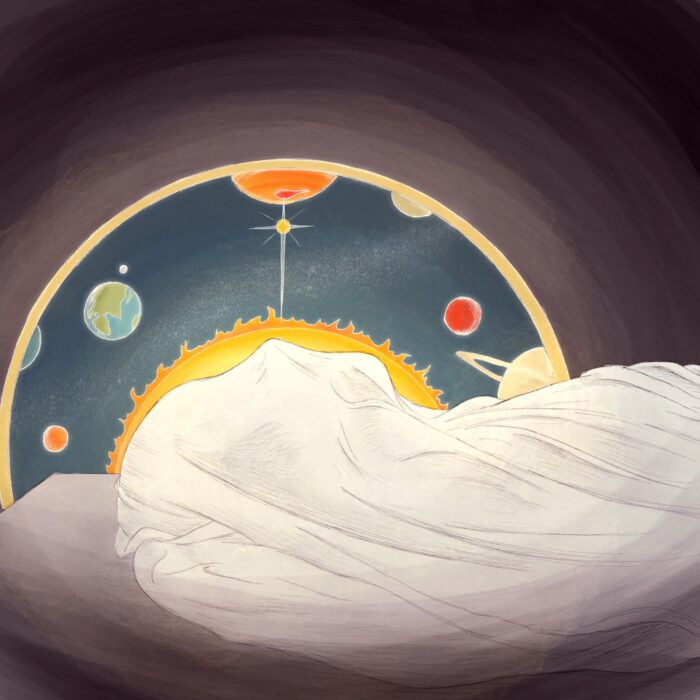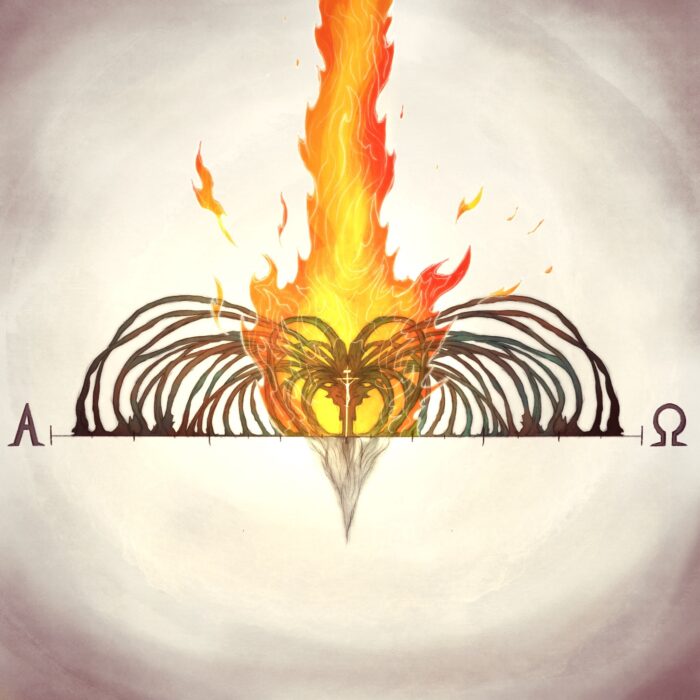
Therefore, brothers, since we have confidence to enter the holy places by the blood of Jesus, by the new and living way that he opened for us through the curtain, that is, through his flesh, and since we have a great priest over the house of God, let us draw near with a true heart in full assurance of faith, with our hearts sprinkled clean from an evil conscience and our bodies washed with pure water. Let us hold fast the confession of our hope without wavering, for he who promised is faithful. (Hebrews 10:19-23 ESV)
Explaining the Text
Hebrews 10:19-23 (as well as verses 24-25 which aren’t depicted in this picture) forms the climax of a discussion of the surpassing merits of Christ’s high priestly office that began back in chapter 7 verse 1. Having examined and unfolded many of the ways in which Christ’s priesthood fulfills and supersedes the Mosaic institution, the author of Hebrews now concentrates the light and heat of the theological super nova that is chapter 7:1-10:18 into an intense and practical laser beam of application for his readers. The application that the author calls for is threefold and built on two foundational pillars that summarize the arguments of the preceding chapters. Let’s examine his two grounding statements first and the three applications second.
The first grounding pillar is that the Christian has confidence (v.19-20) to enter into the true and heavenly holy of holies. This awesome privilege is opened to them by the blood of Jesus and through the curtain, which we are told is–in truth–Christ’s own flesh. We might summarize this first foundational reality by saying that the death of Jesus (His spilled blood, His torn flesh) has opened the way into the presence of God.
The second pillar is that the Christian has–presently and eternally–an everlasting high priest over the house of God. This grounding truth might be summarized by saying that, through His everlasting ministry as high priest, the risen Son eternally applies the merits of His death to all of those who have put their trust in Him.
By Jesus death the way is opened and by His indestructible resurrected life the Christian is able to draw near to God and find blood-bought grace for every need. Both Jesus’ life and death are necessary if sinful creatures are to be drawn into the eternal rest, joy and peace of fellowship with the living God. It is the Crucified and Risen Christ who brings His people into the presence of God….He Himself–His person and His work (and His work is really just His person in act)–He Himself is the only and all sufficient ground for the three commands that follow. And so, before explaining the image, I will turn briefly to the three commands that are extrapolated from the grounding reality of Christ’s person and work.
Because we have confidence to enter into God’s presence by the death of Christ, and because the risen Jesus eternally applies all the benefits of His atoning sacrifice to His people–because of the person and work of Christ–those who by faith hope wholly in Him are to 1) draw near to the throne in the confidence and purity that His work has purchased for them, 2) hold fast to their hope because–in Christ, God has shown Himself infinitely faithful, and 3) consider how to stir one another up to works of love that bear witness to our hope in Christ.
Explaining the Image
In this image I focused largely on illustrating the two grounding concepts outlined in verses 19-21, that is, 1) the achievement of Christ’s death and 2) His everlasting application of that achievement to His people through His ministry as the resurrected High Priest.
Verse 19-20 explain that the way into the holy places is opened through the death of Jesus, expressed poetically as being by His blood and through His flesh. To express this I represented the shed blood of Jesus as a literal path into God’s presence. Also, note that the blood not only leads to God’s throne, but also has it’s source on God’s throne. This is a reminder that the One who died and rose and intercedes for us is Himself God the eternal and co-divine Son (Heb.1:3,8). I followed the author of Hebrews by representing the tearing of Christ’s flesh on the cross as a symbolic echo of the tearing of the true veil that separated man from God’s heavenly holy place. To show this, I made the wound in Christ’s side a literal opening into the presence of God. Using the wound in Christ’s side as a depiction of the torn veil has the added benefit of locating the throne of God, quite literally, in Christ’s heart. This is fitting since–because of Jesus–the “heart” that Christ displayed to us on the cross (one of lavish grace and overflowing love) is also the “heart” of the One seated on the throne toward all those who approach Him in His Son (Rom.8:31, Heb.4:16).
The second grounding statement (v.21) is that we have Jesus as our great high priest. The beauty that the author of Hebrews teaches here is that the very One who died, indeed, the very One whose death secured our means of approach to God, is also the One who presides over and mediates that approach. It was important for me to show that Jesus’ ministry as high priest is an eternal application to us of His death on our behalf. To represent this I gave Christ the ephod of the traditional Mosaic priest (though Christ’s priesthood supersedes that of Aaron’s line, I decided to use the ephod since it is a recognizable sign of the priestly office), and showed him holding a saint in the flow of His own cleansing blood and carrying him into the holy places through His own torn side.
Lastly, the saint is shown here fulfilling the commands of verses 22-23. He draws near to God in the security and purity achieved by Christ’s death, and his position in the hand of Christ implies that he is wholly leaning on the faithfulness of the one in whom he has hoped.




